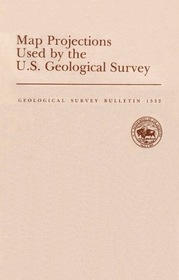
- Category: Computer
- Author: John Parr Snyder
- Pages: ???
- File type: PDF (330 pages, 22.7 MB)
Read and download free eBook intituled Map Projections Used by the United States Geological Survey in format PDF (330 pages, 22.7 MB) – ??? created by John Parr Snyder.
This study of map projections is intended to be useful to both the reader interested in the philosophy or history of the projections and the reader desiring the mathematics. Under each of the sixteen projections described, the nonmathematical phases are presented first, without interruption by formulas. They are followed by the formulas and tables, which the first type of reader may skip entirely to pass to the nonmathematical discussion of the next projection. Even with the mathematics, there are almost no derivations, very little calculus, and no complex variables or matrices. The emphasis is on describing the characteristics of the projection and how it is used.
After decades of using only one map projection, the Polyconic, for its mapping program, the U.S. Geological Survey (USGS) now uses sixteen of the more comnon map projections for its published maps. For larger scale maps, including topographic quadrangles and the State Base Map Series, conformal projections such as the Transverse Mercator and the Lambert Conformal Conic are used. On these, the shapes of small areas are shown correctly, but scale is correct only along one or two lines. Equal-area projections, especially the Albers Equal-Area Conic, and equidistant projections which have correct scale along many lines appear in the National Atlas. Other projections, such as the Miller Cylindrical and the Van der Grinten, are chosen occasionally for convenience, sometimes making use of existing base maps prepared by others. Some projections treat the Earth only as a sphere, others as either ellipsoid or sphere.
The USGS has also conceived and designed several new projections, icluding the Space Oblique Mercator, the first map projection designed to permit mapping of the Earth continuously from a satellite with low distortion. The mapping of extraterrestrial bodies has resulted in the use of standard projections in completely new settings. With increased computerization, it is important to realize that rectangular coordinates for all these projections may be mathematically calculated with formulas which would have seemed too complicated in the past, but which now may be programed routinely, if clearly delineated with numerical examples. A discussion of appearance, usage, and history is given together with both forward and inverse equations for each projection involved.
Read and Download Links:
Map Projections Used by the United States Geological Survey
